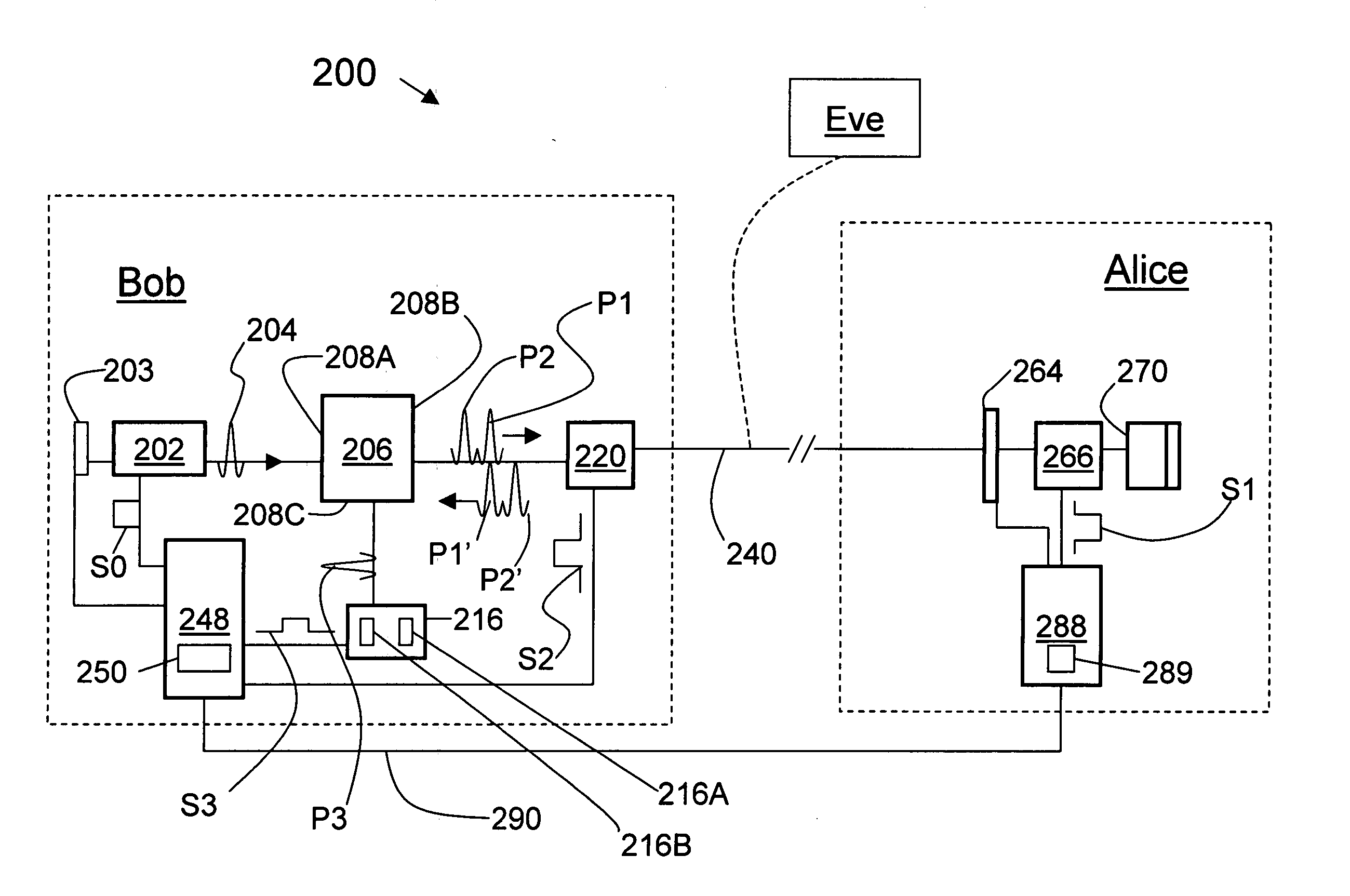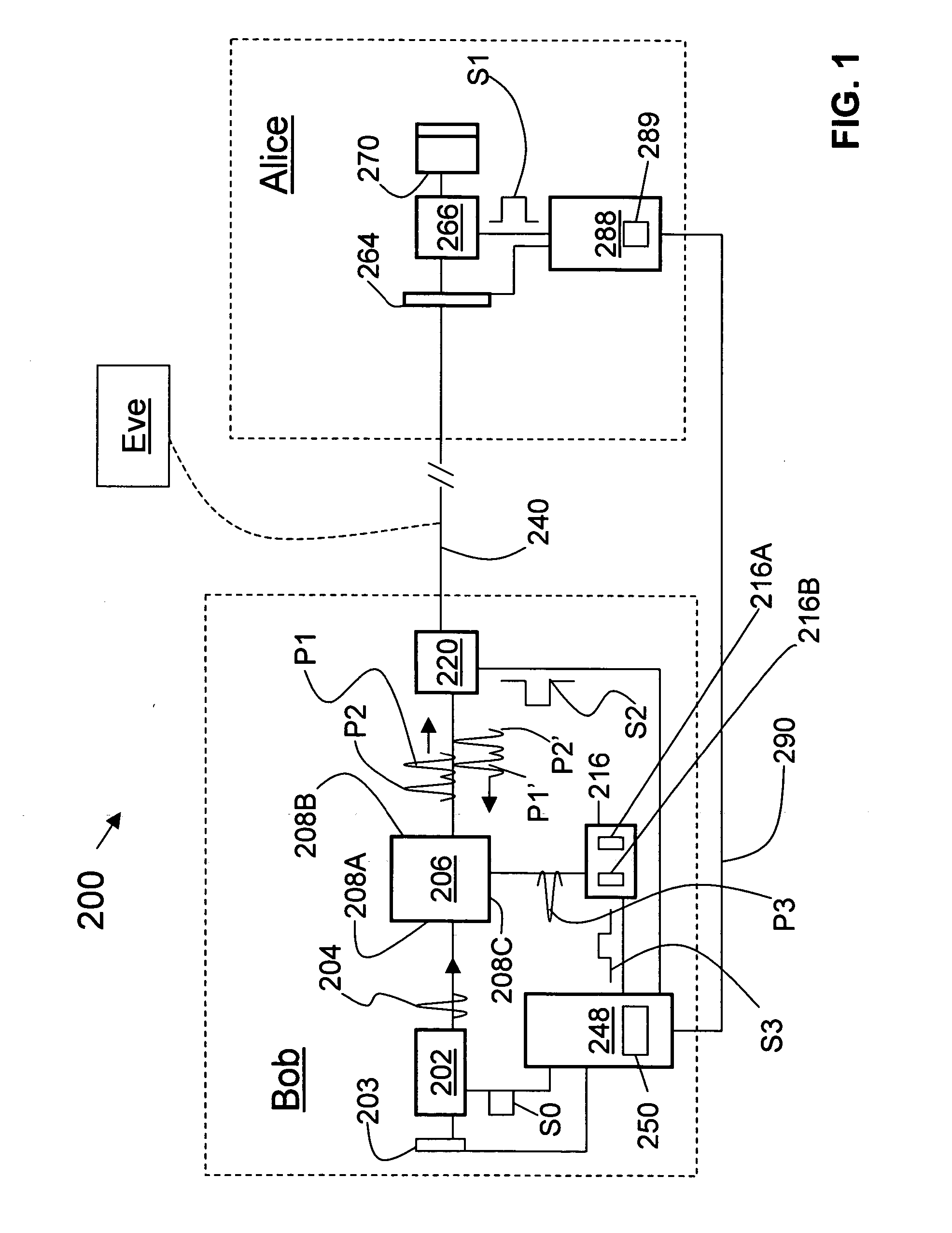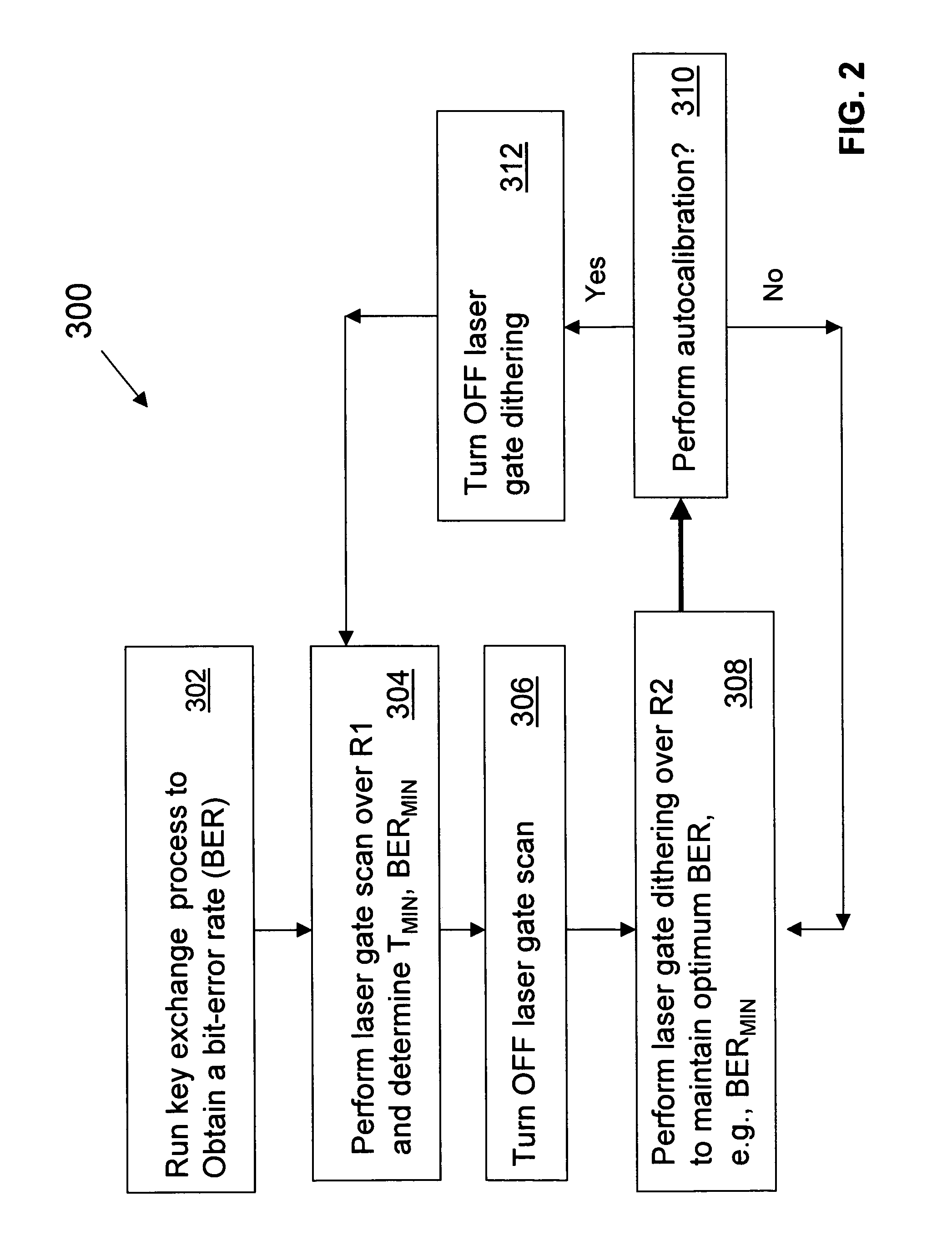QKD system laser autocalibration based on bit-error rate
a laser and bit-error rate technology, applied in the field of quantum cryptography, can solve the problems of reducing the transmission rate of the system, increasing the bit-error rate (ber), and reducing the photon count, and achieve the effect of optimum (or near-optimum) qkd system performan
- Summary
- Abstract
- Description
- Claims
- Application Information
AI Technical Summary
Benefits of technology
Problems solved by technology
Method used
Image
Examples
Embodiment Construction
[0017] The present invention relates to methods of performing autocalibration of a QKD system to maintain optimum system performance. In particular, the present invention involves performing a scan of the laser gating signal timing to determine the optimum laser gating signal position (timing), as well as performing laser gating signal timing dithering in order to maintain the optimum laser gating signal timing during the QKD system's operation. This results in the optimum (e.g., smallest) bit-error rate, which generally corresponds to the optimum operation of the QKD system as a whole.
[0018] In an example embodiment, the invention is carried out by a programmed controller so that the system can be maintained as operating in an ideal or near-ideal state without operator intervention. Such autocalibration is important for a commercially viable QKD system.
[0019] The invention is applicable to one-way, two-way; ring topology and n-way QKD systems that use either polarization encoding...
PUM
 Login to View More
Login to View More Abstract
Description
Claims
Application Information
 Login to View More
Login to View More - R&D
- Intellectual Property
- Life Sciences
- Materials
- Tech Scout
- Unparalleled Data Quality
- Higher Quality Content
- 60% Fewer Hallucinations
Browse by: Latest US Patents, China's latest patents, Technical Efficacy Thesaurus, Application Domain, Technology Topic, Popular Technical Reports.
© 2025 PatSnap. All rights reserved.Legal|Privacy policy|Modern Slavery Act Transparency Statement|Sitemap|About US| Contact US: help@patsnap.com



